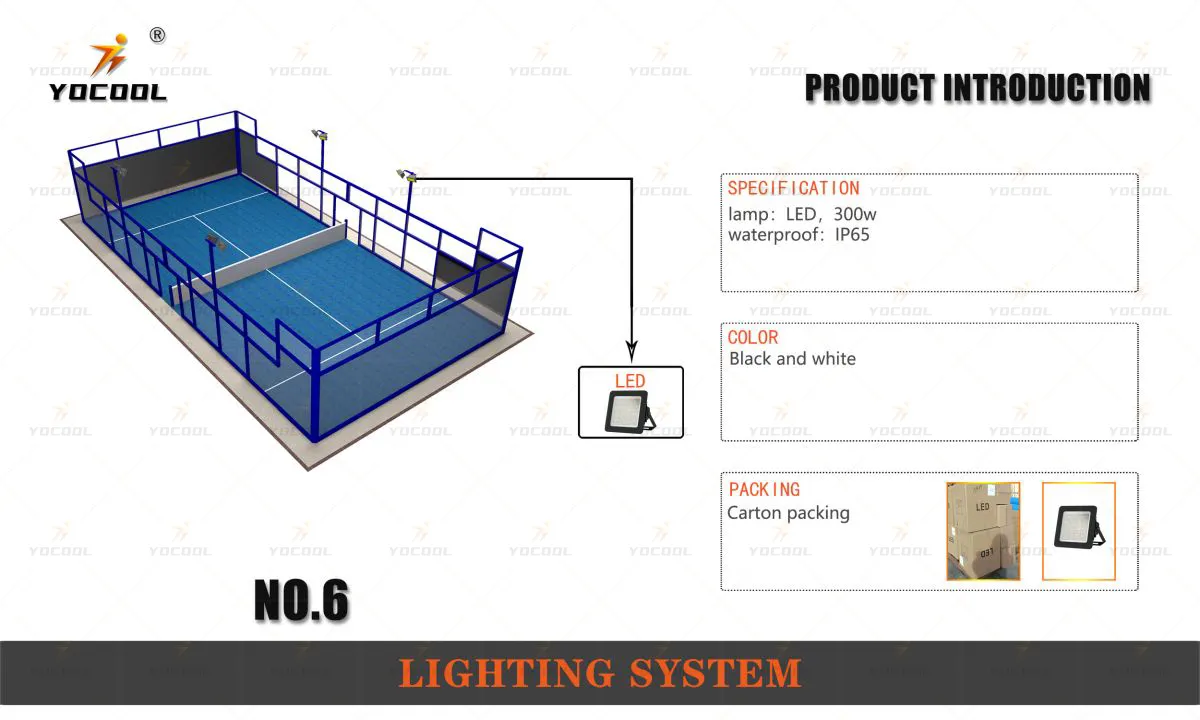

Badminton and Squash Courts A Comparative Analysis
Badminton and squash, both dynamic racquet sports, have garnered a substantial following worldwide. While they share similarities, such as racquet use and court play, their respective environments, rules, and player experiences offer unique elements worth exploring. This article delves into the essential characteristics and differences between badminton and squash courts, providing insights into what makes each sport distinct.
Court Dimensions and Surface
The dimensions of a badminton court are markedly different from those of a squash court. A standard badminton court measures 13.4 meters long and 6.1 meters wide for doubles play. Importantly, the court is divided into two halves by a high net that stands 1.55 meters at the center and 1.524 meters at the posts. The surface is typically made of wood or synthetic materials, providing an ideal amount of grip for players and enabling quick footwork during fast-paced rallies.
In contrast, a squash court is enclosed, measuring 9.75 meters long and 6.4 meters wide. The front wall is an integral part of the game, where players hit the ball against it, and the surface can be made of wood or other special materials like glass or plaster. The courts are often equipped with marking lines that dictate the play area and the various regions, such as the service box and no man's land. The close quarters of a squash court create an intimate atmosphere, where players can engage in strategic ball placement and swift movement.
Rules and Gameplay
The gameplay style of badminton and squash is another distinguishing factor. In badminton, points can be scored by either the serving or receiving side, following a rally scoring system. The game is played using shuttlecocks, with the objective being to strike the shuttlecock over the net and into the opponent's court. Matches are typically played to 21 points, and players must demonstrate agility and precision as they maneuver around the court.
Squash, however, has a different scoring system. Traditionally, points could only be scored by the server, although the rally scoring system has become popular in modern play, allowing any player to score points regardless of who served. The ball is played off the front wall after a serve, and players must return it before it bounces twice. Squash is known for its fast pace and requires players to exhibit excellent stamina and strategic shot selection to outmaneuver their opponents.

Equipment and Gear
The equipment used in badminton and squash also varies significantly. Badminton players utilize lightweight racquets typically weighing between 70 to 100 grams, designed for quick swings and sharp shots. The shuttlecock, made of feathers or synthetic materials, adds to the delicacy and finesse required in badminton play.
Squash players, on the other hand, use slightly heavier racquets, weighing around 110 to 140 grams. The squash ball is rubber and features different types based on skill levels, with varying degrees of bounciness. While squash balls are less aerodynamic than shuttlecocks, their behavior and responsiveness are crucial to mastering this sport.
Social and Cultural Aspects
Both badminton and squash have vibrant communities and cultures. Badminton is particularly popular in countries like China, Indonesia, and Malaysia, where it is played at both recreational and professional levels. It is also recognized as an Olympic sport, which has contributed to its global visibility.
Squash boasts a robust following in the UK, Egypt, and Australia, often characterized by its club-based culture. Squash clubs typically offer facilities for players to gather, train, and participate in leagues and tournaments. The sport emphasizes fitness and camaraderie, fostering connections among players of different backgrounds.
Conclusion
In conclusion, while badminton and squash courts may seem similar at first glance, the differences in court dimensions, gameplay, equipment, and cultural significance highlight the unique attributes of each sport. Whether you prefer the aerial finesse of badminton or the fast-paced intensity of squash, both sports offer exceptional health benefits and opportunities for social interaction, making them beloved activities for players around the globe.
High-Quality Padel Court Solutions for Sports Facilities & Clubs
Premium Padel Courts: Custom Designs & Panoramic Views
Premium Paddle Racquet | High-Control Lightweight Design
NO.2 Panoramic Padel Orange Racket - Superior Grip & Durability
High-Performance Industrial Flooring Solutions China Paddle Tennis Court for Sale
High-Performance Industrial Flooring Solutions Durable & Cost-Effective